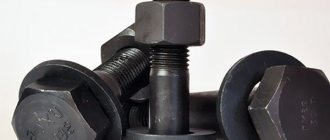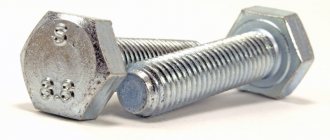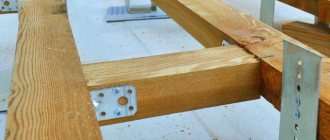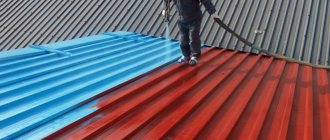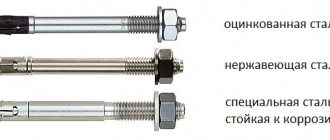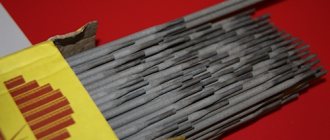Author of the article:
Fasteners are made from a wide variety of materials. The most popular raw material for the production of hardware is steel, since the main function of the fastening element is to maintain strength and the ability to withstand high loads. Different types of steel best suit such tasks.
In addition to the properties of the source material, its technological processing during the production process is also of great importance. There are many technologies for processing hardware, but the most common is the one that involves coating the surface of the fastener with various compounds.
The choice of fasteners with a specific coating is of high importance, since in construction, repair and industrial work it is important to know the conditions under which the fastener will be used.
Types of fasteners.
In most cases, connections are made with threaded fasteners. Most often, threads have studs, screws, bolts and their corresponding parts - nuts, if any, and elements of additional fasteners - washers. The first group (studs, screws, bolts) are rods with external threads, which are characterized by pitch and diameter. A bolt must have a head; a screw may or may not have one. In this case, the screw has a slot, but the bolt does not. All rods with external threads can be connected either to a nut, which also has an internal thread, or to a mounting hole.
The most common fasteners are: bolts, washers, nuts, screws, studs.
Screws can be used to: connect parts, with or without internal threads. It has the form of a rod with an external thread at one end and a structural element for transmitting torque at the other. The force-transmitting element can be various types of heads, slots in the end of the rod, and the like. The screw is intended to form a threaded connection or fixation. In addition to connecting parts, screws, along with bolts, can serve as the axis of rotating parts, serve as a guide for linear or rotational movement, and other purposes.
A screw is a type of screw, distinguished by the fact that it has a conical narrowing at the end and a rarer thread. A screw that creates a thread when screwed in is called a self-tapping screw—colloquially a “self-tapping screw.” The nut also serves to transmit torque with great force, has a threaded hole and is usually connected to screws, bolts or studs that have a counter thread.
The washer serves to increase the area of the supporting surface (flat), prevent unwinding under the influence of vibrations (spring), etc.
For all these types of fasteners, there are standards used both in our country and abroad. Conventionally, they can all be divided into metric and inch, using, respectively, pitch in the metric system or English (inch).
Mechanical properties
The most important mechanical properties of fasteners include their strength characteristics. We are talking, first of all, about resistance to tensile/tearing loads, as well as about the hardness of the working surface. The requirements for these qualities are established by the standards of GOST P ISO 898-1-2011. The numerical values of the indicators under consideration depending on the strength class of the fastener are presented in the table.
| Strength class | Tensile strength limit, MPa | Hardness determined by the Rockwell method, HRC | Hardness determined by the Rockwell method, HRB | Hardness determined by the Brinell method, HBW | Hardness determined by the Vickers method, HV | ||||
| @ | @@ | @ | @@ | @ | @@ | @ | @@ | ||
| 12.9 | 1200 | 44 | 39 | —— | —— | 414 | 366 | 435 | 385 |
| 10.9 | 1000 | 39 | 32 | 361 | 304 | 380 | 320 | ||
| 9.8* | 900 | 37 | 28 | 342 | 276 | 360 | 290 | ||
| 8.8** | 800 | 34 | 23 | 318 | 242 | 335 | 255 | ||
| 8.8* | 32 | 22 | 304 | 238 | 320 | 250 | |||
| 6.8 | 600 | —— | —— | 99,5 | 89 | 238 | 181 | 250 | 190 |
| 5.8 | 500 | 95.5a | 82 | 209a | 152 | 220a | 160 | ||
| 5.6 | 79 | 147 | 155 | ||||||
| 4.8 | 400 | 71 | 124 | 130 | |||||
| 4.6 | 67 | 114 | 120 | ||||||
The following designations are used in the table:
- “*” – rod diameter up to 16 mm inclusive;
- “**” – rod diameter exceeds 16 mm;
- "@" - not more;
- "@@" - not less;
- “a” - the hardness indicator measured at the ends of the threaded rods of fasteners should not exceed 99.5 HRB, 238 HB or 20HV.
Materials for the manufacture of fasteners
Although fastener elements are made not only from metals, but also from plastics, wood and other materials, the main interest is in fasteners made from various types of steels, non-ferrous metals and alloys. Due to the high cost of the latter, the bulk of the fasteners produced are made from various grades of steel. The selected material depends on the requirements for the mechanical and physical-chemical characteristics of fasteners and is determined by the table below:
| Fastener steel grade | tensile strength σв, MPa | yield strength σt, MPa | relative elongation σ5, % | impact strength, aH, J/cm2 | |
| Bolts | Nuts | no less | |||
| 12Х18Н10Т | 12Х18Н9Т, 10Х17Н13М2Т | 520 | 200 | 40 | 40 |
| 20Х13 | — | 700 | 550 | 15 | 60 |
| 14Х17Н2 | 20Х13, 14Х17Н2 | 650 | 12 | 60 | |
| 10Х11Н23Т3МР 13Х11Н2В2МФ | — Х12Н22Т3МР | 900 | 550 | 8 | 30 |
| 25Х1МФ | 25Х2М1Ф 20Х1М1Ф1ТР | 750 | 10 | 30 | |
The choice is determined by the requirements for corrosion resistance, temperature strength, ability to work under pressure, in aggressive environments, the presence or absence of certain magnetic properties, etc.
In a number of cases, when high demands are placed on fastening elements in terms of corrosion resistance, weight, strength, dimensions, high heat resistance, lack of spark upon impact, and many others, other metals and alloys are used for their manufacture. We are talking about brass, titanium, tantalum, beryllium alloys, aluminum, tungsten and others.
Cadmium plating of fasteners
Cadmium is a coating material used to improve the corrosion resistance of fasteners. It can be of various shades: from bright silver to yellowish. Cadmium plating has a relatively low coefficient of friction and is often used in combination with chrome plating to enhance its durability properties.
This type of coating is typically achieved using electrodeposition, which is a type of electroplating that uses electrical current to transfer particles from the coating surface to a substrate.
Cadmium is considered unsuitable for use in direct contact with food. Its functional temperature maximum is 232 degrees Celsius, but it is typically heat treated at approximately 190 degrees after coating to reduce the risk of hydrogen decomposition.
Protective coatings for fasteners
Fastening elements are additionally protected by creating oxide films (oxidation), as well as various types of coatings. The choice of coating is determined by technical requirements; the thickness depends on the size of the fastener and the thread pitch. In particular, for the most popular options:
- With a thread pitch P < 0.4 mm, the coating thickness varies in the range of 3-6 µm;
- With a thread pitch of 0.4 < P < 0.8 mm, the thickness is 6-9 µm;
- With a thread pitch of P > 0.8 mm, the coating thickness is 9-12 microns.
All necessary definitions are contained in GOST 1759.4-87. Coatings must meet the requirements specified in Table 2:
| Designation | Coating | Operating temperature, t °C, no more |
| 00 | Uncoated fasteners | |
| 01 | Chromated zinc plated fasteners | 300 |
| 02 | Cadmium plated with chromated fasteners | 200 |
| 03 | Multi-layer copper-nickel coating of fasteners | 600 |
| 04 | Multilayer copper-nickel-chrome | 600 |
| 05 | Oxide coating of fasteners | 200 |
| 06 | Phosphate oil-coated coating of fasteners | 200 |
| 07 | Tin plated fasteners | 150 |
| 08 | Copper plating fasteners | 600 |
| 09 | Zinc coating of fasteners (galvanized fasteners) | 200 |
| 10 | Oxide anodizing coating of fasteners with chromate plating | 200 |
| 11 | Oxide coating of fasteners made from acidic solutions | 200 |
| 12 | Silver plated fasteners | 600 |
| 13 | Nickel plated fasteners | 900 |
Types of coatings – InterCrep
The type and thickness of the hardware coating are indicated in the marking of the fastener. These are the last numbers before GOST indicates the product.
An example of a symbol on a regular nut: Nut M12x1.25-6N.05.40X.016 GOST 5915-70.
In the example, the last digits “016” are summary information about the type of coating and its thickness. The first two digits “01 6 ” are the type of coverage, which are taken from the table below. The next one or two numbers “ 01 6” is the coating thickness in microns. Knowing this information, we get the following: “016” - zinc, chromated coating with a thickness of 6 microns. In some cases, digital markings are replaced with alphabetic ones, then this coating will look like this: “Ts.khr6”
Types of coatings (letter and number designation)
Type of coating Zinc, chromated - letter Ts. hr - digital
01 Type of coating Cadmium, chromated - letter Kd. хр - digital 02 Type of coating Multilayer: copper-nickel - letter M. N - digital 03 Type of coating Multilayer: copper-nickel-chrome - letter M. N. H. b - digital04 Type of coating Oxide, oil-impregnated - letter Chem. Oks. prm - digital05 Type of coating Phosphate, oil impregnated - letter Chem. Phos. prm - digital 06 Type of coating Tin - letter O - digital 07 Type of coating Copper - letter M - digital 08 Type of coating Zinc - letter C - digital 09 Type of coating Zinc, hot - letter Hor. C - digital 09 Type of coating Oxide, filled with chromates - letter An. Oks. Нхр - digital 10 Type of coating Oxide, from acidic solutions - letter Chem. Pass - digital 11 Type of coating Silver - letter Wed - digital 12 Type of coating Nickel - letter H - digital 13
interkrep.com
Strength designations
GOST 1759.0-87 also determines the marking of fasteners, which indicates their strength class. It must be applied to the following elements:
- Hex head bolts,
- Screws with thread diameter d ≥ 5 mm and hexagon socket,
- Large diameter studs (more than 12 mm).
For strength classes 3.6, 4.6, 4.8, 5.6, 5.8, 6.6, 6.8 and 6.9, fasteners are marked as agreed between fastener manufacturers and their consumers. Markings are applied by manufacturers to the heads of a bolt or screw, or the end of the studs. Moreover, their sizes are determined by manufacturers for technical and design reasons. Traditionally, markings are divided into convex and recessed according to the method of their application.
Symbols for bolts, studs and screws
Symbols for the following fasteners:
- bolts,
- hairpins,
- screws made of carbon steels of strength classes 3.6...6.9,
- nuts made of carbon steels of strength classes 4...8 and
- products made of non-ferrous alloys -
contain the following attributes:
- the name of detail,
- execution,
- thread diameter,
- bolt length,
- small step,
- thread tolerance fields,
- instructions on the use of the material,
- strength class or group,
- type of coating and
- dimensional standard number for fasteners.
Bolts, studs and screws of strength classes 8.8, 10.9, 12.9, 14.9 and nuts of strength classes 10, 12 and 14, products made of corrosion- and heat-resistant, heat-resistant and heat-resistant steels, as well as parts the material of which is not provided for by GOST 1759.0-87, should designate in the same way, only it is necessary to indicate the grade of steel or alloy.
The fastener designation does not indicate:
- thread accuracy class 3,
- large thread pitch,
- version 1,
- type of coating 00 (fasteners without coating).
Example of designation of fasteners
Designation of a bolt according to GOST 7795-70 with a diameter of 10 and a length of 60 mm with a thread tolerance of 6g made of 38ХА steel with zinc coating:
- with large thread pitch (version 1): Bolt M10×60.6g.38×A.88.09. GOST 7795-70;
- with fine thread pitch (version 2): Bolt 2M10×60×1.25.6g.38ХА.88.09.GOCT 7795-70.
↑ To the beginning
Fastener marking
A number of fastener elements must have characteristics applied to them that determine mechanical strength, dimensions, types of coating, and others. These elements are:
Bolts with a hexagonal head, screws with a cylindrical head and a hexagonal socket, studs and hexagonal nuts should be marked with a sign of the strength class (or material group) and a brand (trademark of the manufacturer, and products with a left-hand thread are additionally marked with a sign of a left-hand thread).
The following are subject to mandatory marking:
hex head bolts of strength classes 4.6, 5.6, 6.6, 8.8,9.8, 10.9, 12.9;
cylindrical head screws with hexagonal socket and studs of strength classes 8.8, 9.8, 10.9, 12.9;
The first number characterizes the tensile strength (multiplied by 100, determines the nominal tensile strength in N/mm²). Example, strength class 8.8: the first number means that the tensile strength will be at least 800 N/mm². If the load on the bolt is equal to or exceeds the above value, the fastener will break.
The second number is the ratio of the minimum yield strength (stress at which plastic deformation begins) multiplied by 10 to the ultimate strength. For strength class 8.8, the second number means that a product belonging to this class will have a minimum yield strength of 8x8x10=640(N/mm²).
For example, two bolts with strength classes 4.6 and 4.8 will have the same minimum tensile strength - 400 N/mm², but the plastic deformation will be different. The first bolt will have a minimum yield strength of 400x0.6=240(N/mm²), and the second bolt will have 400x0.8=320(N/mm²). That is, when the load on the bolts reaches 250 (N/mm), the first bolt, unlike the second, will begin to undergo irreversible deformation of the shape and structure of its material. In other words, the bolt will begin to “leak”.
nuts of strength classes 4, 5, 6, 8, 10, 12.
Nuts made of carbon steel are also divided into 6 strength classes: 4, 5, 6, 8, 10, 12. The strength class is marked with one number - this is a 100-fold reduction in the minimum strength value of the bolt with which the nut can be used, which if it could fully withstand the load. For example, a nut with strength class 10 can be used in conjunction with a bolt whose minimum tensile strength is 1000 N/mm², i.e. with a bolt of strength class 10.9.
However, the fastener designations do not indicate:
- Execution 1;
- Type of coating 00 (i.e. parts without coating);
- Large thread pitch;
- Accuracy class 3.
An example of decoding the designation of a fastener element
Designation of a screw according to GOST 7795-70 with a diameter of 20 and a length of 100 mm with a thread tolerance of 6g made of ZOKhR steel with zinc coating:
- 1. with large thread pitch (version 1): Bolt M20×100.6g. ZOHR.88.09. GOST 7795-70;
- 2. with fine thread pitch (version 2): Bolt 2M20×100×1.25.6g.ZOKhR.88.09.GOCT 7795-70.
Kabanov E.B., Doctor of Technical Sciences Dernova A.N., head of the laboratory of NPC Mostov LLC
About the selection of protective coatings for high-strength fasteners
High-strength fasteners (bolt sets: bolt, nut and washers) used for the manufacture of metal building structures have a number of specific features arising from the conditions of use of this fastener. The main ones are increased requirements for reliability and the ability to create a calculated pre-tension during installation.
According to the established practice of constructing bridge structures, the installation of their mounting connections is carried out due to the frictional forces that arise when the mounting surfaces are compressed to the design force with high-strength bolt kits. Calculation of friction connections is carried out in accordance with the requirements of SNiP 2.05.03 “Bridges and pipes”.
The calculated tension forces of bolt sets are achieved by monitoring the tightening torque of the bolted connection, calculated by the value of the torque coefficient.
Until now, high-strength bolts and nuts have been supplied to construction sites without protective coatings. Therefore, the only way to protect hardware from corrosion for the period before installation is a conservation lubricant, the further use of which when tightening fasteners during the assembly process is unacceptable due to a decrease in the tightening force of lubricated bolts and spreading of the lubricant over the surface of the mounting connections, which will lead to loss of adhesion of the standard paint and varnish coverings. In accordance with STP 006-97, to remove conservation grease and contaminants, fasteners are washed in hot alkaline solutions before installation, followed by lubrication in a 10-20% solution of oil in gasoline. The shelf life of bolt kits prepared in this way does not exceed 10 days. The noted auxiliary technological operations are costly and labor-intensive to carry out on a construction site, especially in winter.
To eliminate these operations for pre-installation preparation of fasteners, it is advisable to apply protective coatings to them at the factory stage of manufacturing hardware, which are subject to the following requirements: ● the coating must retain protective ability at least for the period before their installation, including transportation and storage; ● the thickness of the coating should ensure free screwing of the nut onto the bolt without preliminary lowering of the thread in order to maintain the strength of the threaded connection; ● the coating must provide the standard value of the twist coefficient in the Kclose range. = 0.11-0.20; ● the technology for applying coating to fasteners should not cause hydrogenation of the steel substrate of the fastener, which contributes to its subsequent unpredictable embrittlement and destruction.
Special attention should be paid to protective coatings for long-term anti-corrosion protection of fasteners, for which the following requirements can be presented: ● the coating must maintain protective ability for a long service life when exposed to various aggressive environments; ● ensure the standard value of the twist coefficient in the Kclose range. = 0.11-0.20; ● coating technology should not require thread reduction; ● the technology for applying coating to fasteners should not cause hydrogenation of the steel substrate of the fastener, which contributes to its subsequent unpredictable embrittlement and destruction.
The practice of using protective coatings for fasteners has shown that the best means for their anti-corrosion protection is galvanizing. However, when using this type of coating, the operation of preparing the steel surface by acid etching should be excluded from the galvanizing process, since it promotes the process of hydrogenation of steel. For this reason, electroplating cannot be used to protect high-strength fasteners. Hot zinc coating can be applied subject to the use of technology that eliminates the risk of hydrogenation.
It should also be noted that the use of high-strength hot-dip galvanized fasteners is hampered by the significant thickness of the coating, which does not allow its application to bolt sets with threaded connection tolerances of 6g/6H. In this regard, when using hot-dip galvanized fasteners, it is necessary to loosen the tolerance on the outer diameter of the thread. GOST 32484.1÷32484.6-2013 “High-strength structural bolt sets for pre-tensioning”, which come into force in July 2015, provides a 6az thread tolerance zone for nuts for their use in bolt sets with hot-dip galvanized coating. In this case, the thread on the nut is cut when the hot-dip galvanizing coating has already been applied to the workpiece. Only under such conditions is the use of hot-dip galvanizing justified for long-term anti-corrosion protection of high-strength fasteners.
The only competitor to hot zinc coating can be a thermal diffusion zinc (TDZ) coating of appropriate thickness. It should be noted, however, that fasteners with hot-dip galvanizing and TDC coating are characterized by unacceptably high values of the torque coefficient, as a result of which the standard level of tension force is not achieved when tightening the bolts. This problem is solved by the use of anti-friction coatings, known as “duplex systems”.
At the same time, we emphasize that, unlike bridge construction, high-strength fasteners with hot-dip galvanized coating are widely used in construction, mechanical engineering and shipbuilding within the limits of rights and responsibilities determined by the design documentation and the law.
Of the available types of galvanizing for anti-corrosion protection of high-strength bolt sets, the most appropriate is the use of thermal diffusion galvanizing of classes 2 or 3 and zinc-filled lamella-type paint and varnish coatings (Fig. 1). Both methods involve the use of light abrasive-jet blasting when preparing the surface of hardware for coating to remove corrosion products and oxide films that arose during their manufacture, which eliminates the need for acid etching.
| A) | b) |
| Rice. 1. High-strength bolts with different coatings: a) bolt with TDC coating; b) bolt with lamellar coating | |
TDC coating, which has existed for more than 100 years, is traditionally performed using the following technology: galvanized parts are placed in a retort with a powder mixture consisting of powdered zinc, alumina and an activator (ammonium chloride or activated carbon). By means of radiation heating, the retort is heated to the melting temperature of zinc (420 oC), and due to temperature diffusion, zinc atoms from the solid and vapor phases are introduced into the iron crystal lattice. In turn, active iron atoms move towards zinc. As a result of this process, an intermetallic Zn-Fe coating is formed, consisting of several phase layers. The first, actual diffusion α-layer with a thickness of 10-12 microns, is a solid solution of zinc in iron, containing up to 4.5% Zn. Due to it, subsequent layers are firmly fixed to the steel base. The next G-layer precisely ensures the diffusion of zinc and iron in opposite directions. The G-layer with a thickness of 4-5 microns contains up to 28% iron and is very fragile. On top of these layers, an intermetallic δ-layer is also formed, which has a columnar structure and contains, in addition to zinc, from 11.5 to 7% iron. It is this that, due to the higher zinc content, that begins to provide protective properties for steel. Since it is an intermetallic compound, it has high microhardness (up to 4800 MPa) compared to pure zinc, which has a microhardness of no more than 900 MPa. The thickness of the δ-layer is 30-40 µm. Then, with longer heating (more than 3 hours), a ζ-layer is formed, which is an almost pure zinc coating that has a microhardness comparable to zinc and provides the highest protective properties. The thickness of the ζ-layer, depending on the exposure in the oven, can reach 40 microns or more. Thus, a TDC coating on fasteners can have good protective ability with a total thickness of at least 30-40 microns. The specified thickness of the TDC coating fits into the value of the total inter-threaded gap between the threaded surfaces of the bolt and nut with a tolerance of 6g/6H, which for the most common standard size of high-strength bridge hardware M22 is 113 microns, which does not interfere with the screwability of the specified threaded connection, provided that the zinc coating is sufficiently ductile.
| Fig.2. Installation for applying TDC coating: a) loading a retort containing 1.2 tons of fasteners into the oven; b) cooling the retort after galvanizing. |
Among the advantages of the TDC method, the following should be mentioned: ● parts are galvanized in hermetically sealed retorts, therefore the diffusion galvanizing process is environmentally friendly and does not require the creation of treatment facilities; ● the resulting coating has no pores and, due to the diffusion layer in the form of a solid solution of zinc in iron, has a strong adhesive bond with the steel substrate; ● the protective ability of the coating is 2-4 times higher than that of galvanic coatings and slightly higher than that of hot-dip galvanized coatings; ● diffusion zinc coats parts with a uniform layer without sag, accurately repeating the profile of the galvanized surface, including blind holes, elements of complex configuration, cracks, cavities, threads, etc.; ● production waste does not require burial.
At the same time, the traditional TDC method using radiation heating has the following disadvantages: ● the impossibility of obtaining a high-quality coating with coating thicknesses less than 30 microns due to the high content of zinc-iron intermetallic in the upper layers, which causes high microhardness of the coating, and, therefore, high twist coefficient; ● relatively low productivity of the TDC method, limited by the volume of retorts for galvanizing and the duration of heating of the retort with powder mixtures and galvanized parts; ● significant consumption of electricity and zinc powder, zinc burnout during radiation heating; ● the need for a massive metal-intensive heat-insulated furnace body. Based on these disadvantages, it is more rational to use a new TDC method for galvanizing high-strength fasteners - with induction heating, which allows: ● to obtain a uniform homogenized protective coating of the required thickness with high corrosion resistance over the entire area of the galvanized surface, containing up to 98% zinc; ● reduce galvanizing time from 2.5 hours to 5-20 minutes, i.e. 12-48 times faster; ● reduce by 2 times the consumption of zinc powder for coating the surface of metal products by reducing the degree of zinc burnout; ● reduce energy consumption by 4 times by reducing the duration of the galvanizing production cycle; ● maintain the geometry, profile and diameter of the thread when galvanizing threaded connections; ● restore the zinc coating if it is damaged by re-galvanizing; ● significantly reduce capital investments for the creation of an industrial installation using the proposed TDC method, compared to an installation made using the traditional method.
Currently, there is a pilot plant for galvanizing parts using the TDC method with induction heating, which has a working chamber with a diameter of 300 mm and a length of 4 m. The productivity of such an installation is up to 30 kg of hardware per hour.
An alternative to the above methods of protecting fasteners can be a zinc-aluminum lamellar coating such as Dacromet or Delta. These are actually paint and varnish coatings filled with scaly particles of zinc and aluminum no more than 10-15 microns thick, having excellent decorative properties (silver color) and durability of at least two years - for the entire period of transportation and storage of hardware until installation operations are performed. The lamellar coating technology eliminates the possibility of hydrogenation, because when using it there is no contact with acids. The coating base suspension is applied to the products in three layers by dipping them into centrifuges filled with the suspension and subsequent drying for 5-10 minutes in continuous ovens at temperatures of 200 and 300 °C. There is no diffusion of zinc into the steel substrate.
As our research has shown, both TDC and Dacromet coatings require the use of special polymer-based lubricants to ensure the required value of the twist coefficient (in the range Kzakr. = 0.11 – 0.15) under the assembly conditions of the mounting surfaces of bridge structures. In this case, the problem arises of the compatibility of these lubricants with standard paint and varnish coatings for bridge structures. In this case, suppliers of paints and varnishes do not guarantee the durability of standard coatings in bolted joints.
It would be promising to form a coating on high-strength bolts that simultaneously provides the required torque coefficient (0.11 - 0.15), anti-corrosion protection and compatibility with coating coatings. A universal coating would solve several problems in different directions at once: eliminating the pre-installation preparation of fasteners, ensuring the necessary durability of anti-corrosion protection, ensuring the required compression forces of fasteners, which would arouse mutual interest among manufacturers of high-strength hardware and in bridge construction organizations. A zinc-filled lamellar coating with polymer-based lubricants is seen as such a universal coating.
